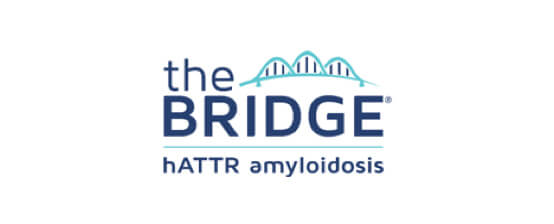

Treatment Options
There are several treatment options
for patients with hATTR
amyloidosis
There are several therapeutic approaches to
hereditary transthyretin-mediated (hATTR) amyloidosis
to consider.1 These treatment options address the pathogenesis of the disease in multiple ways:

Suppressing production of amyloidogenic transthyretin (TTR) in the liver
Antisense oligonucleotides (ASOs)1-3
Short, chemically modifed oligonucleotides that bind to
TTR messenger RNA (mRNA) and
prevent production of TTR protein
via RNAse H1-mediated cleavage.
RNA interference (RNAi) therapeutics1-3
Double-stranded small interfering RNAs (siRNA) that bind to TTR mRNA and prevent production of TTR protein via the RNA-induced silencing complex (RISC).
Orthotopic liver transplant (OLT)1,2
A potential treatment option for patients presenting with early stages of polyneuropathy that removes the
primary source of variant TTR.

Stabilizing TTR tetramers
TTR tetramer stabilizers1,2
Drug molecule that binds to the TTR protein, preventing the dissociation into monomers.
Patient Resources
Family Resources
Information and Support Groups
References:
- Sekijima Y. J Neurol Neurosurg Psychiatry. 2015;86(9):1036-1043.
- Ando Y, Coelho T, Berk JL, et al. Orphanet J Rare Dis. 2013;8:31.
- Ueda M, Ando Y. Transl Neurodegener. 2014;3:19.






